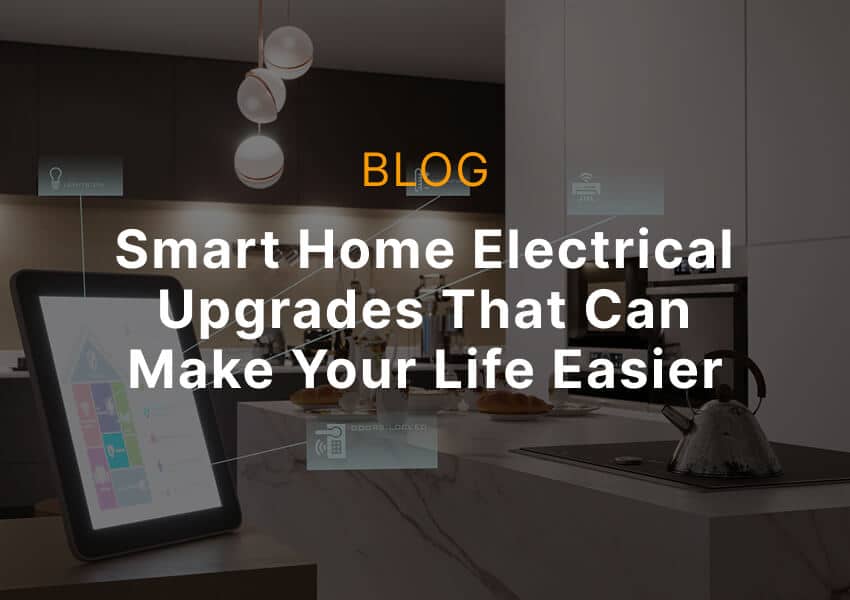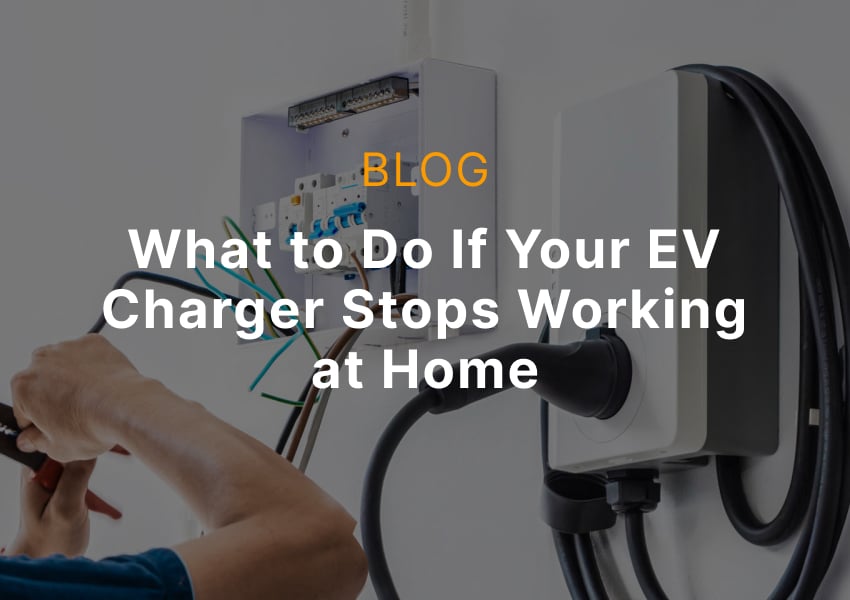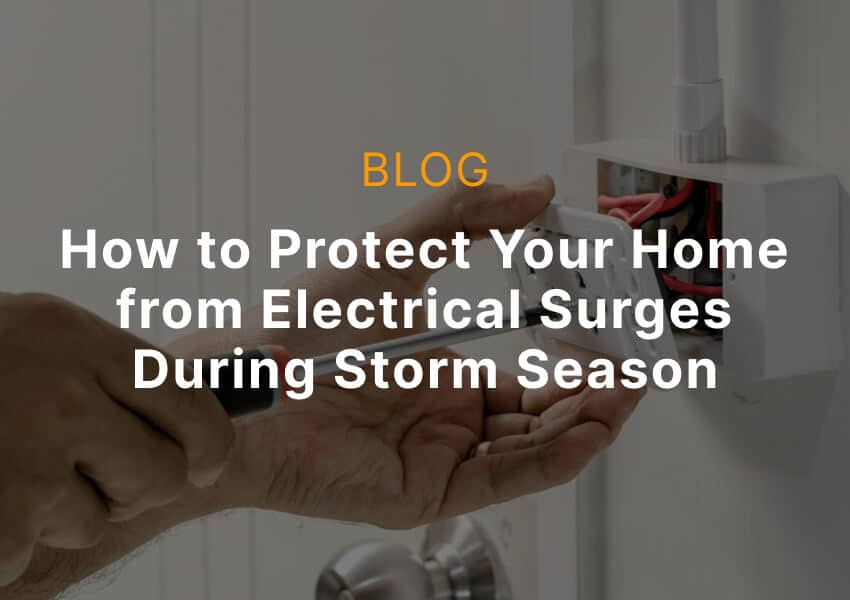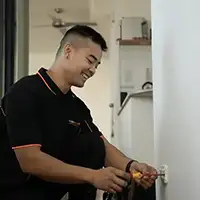Thinking about installing an EV charger at home? One of the first questions most people ask is how much power it uses and whether it will spike their electricity bill. The answer depends on several key factors, including the type of charger, your vehicle’s battery size, and how often you charge.
In this guide by Powerhub Electrical, we explain how much power EV chargers draw in Australian homes, what it costs to run one, and what you should know before installing a charger in NSW.
What Impacts EV Charger Power Usage
EV charging at home is affected by the type of charger installed, the size of the vehicle’s battery, and the speed at which you want to charge. In Australia, residential power supply is typically 240 volts, and most homes use single-phase power. Some newer or larger homes, especially those with solar systems or pool equipment, may have access to three-phase power.
Charger Type and Size
Your charger’s design and how it connects to your home supply have the biggest impact on power draw.
- Level 1 charger: This is the slowest method. It plugs directly into a standard 10-amp general power outlet, drawing around 2.4 kilowatts. Charging times are long. Expect 10 to 20 hours for a full charge, depending on your battery size.
- Level 2 charger: These are hardwired by an electrician and typically rated between 16 amp and 32 amp. On a single-phase 240-volt supply, this allows for 3.6 to 7.2 kilowatts of charging. If your home has three-phase power, a 32-amp unit can deliver up to 22 kilowatts for much faster charging.
- DC fast charger: These are used in public or commercial settings and unsuitable for residential properties. They usually provide 50 kilowatts or more and require specialised infrastructure well beyond standard household capacity.
Vehicle Battery Size
Electric vehicle battery sizes vary by model and directly impact the total amount of energy used during a full charge.
- Smaller EVS like the MG ZS EV use around 44 to 50 kilowatt-hours of energy per full charge
- Mid-sized vehicles such as the Hyundai Ioniq 5 and Tesla Model 3 have batteries between 58 and 75 kilowatt-hours
- Larger SUVS or long-range models like the Tesla Model Y or Kia EV9 can exceed 80 kilowatt-hours
The more kilowatt-hours required, the more electricity your charger will draw over time. A full battery charge on a 60 kilowatt-hour vehicle using a 7.2 kilowatt charger can take around 8 to 9 hours.
Charging Speed
The faster you want to charge, the more power your system must deliver per hour.
- A 3.6 kilowatt charger (15 amp on single phase) will deliver roughly 15 to 20 kilometres of range per hour of charging
- A 7.2 kilowatt charger (32 amp on single phase) can provide 30 to 40 kilometres per hour
- A 22 kilowatt charger (32 amp on three phase) can add 100 kilometres or more per hour, depending on the car
Homes in NSW with only single-phase power will be limited to a maximum of 7.2 kilowatts for EV charging unless a three-phase upgrade is completed. It is important to note that many EVs can only accept a limited AC charging rate regardless of the charger’s potential output. Your charger and vehicle must both support the available supply.

EV Charger Power Ratings Explained
Not all EV chargers deliver the same charging speed or draw the same amount of power. The charger’s power rating determines how quickly it can transfer energy from your home to the car’s battery. These ratings are measured in kilowatts and depend on both the amperage of the charger and whether your home uses single-phase or three-phase power.
Level 1 Charger
A Level 1 charger plugs into a standard 10-amp, 240-volt household socket. It delivers around 2.4 kilowatts of power. This is the slowest charging method and is only suitable for occasional use or overnight charging for low daily driving needs. On average, it provides about 10 kilometres of driving range per hour of charging.
Level 2 Charger
Level 2 chargers are hardwired and much faster. They come in 16-amp or 32-amp models and are connected to a dedicated circuit.
- On single-phase power, a 32-amp Level 2 charger can deliver up to 7.2 kilowatts
- On three-phase power, the same charger can deliver up to 22 kilowatts. Most EV owners in Australia install Level 2 chargers at home as they provide a good balance between speed and practicality.
DC Fast Charger
DC fast chargers are found at public charging stations and commercial properties. They bypass the car’s onboard charger and deliver high-voltage DC directly to the battery. These chargers typically deliver between 50 and 350 kilowatts. Due to their high power requirements and specialised equipment, DC fast chargers are not designed for residential use.
Single Phase vs Three Phase Charging
In Australia, most residential properties have single-phase power. However, homes with higher energy needs or larger appliances may be connected to a three-phase supply. The type of supply your property has will determine the maximum output your EV charger can deliver.
Single-Phase Limitations
A single-phase supply provides 240 volts and typically supports up to 32 amps per circuit. This means the maximum output for an EV charger on single phase is around 7.2 kilowatts. While this is suitable for overnight charging, it may not be fast enough if you need regular top-ups or drive long distances each day.
If you’re already running high-demand appliances like electric hot water, ovens, or ducted air conditioning, adding an EV charger may require load balancing or switchboard upgrades to avoid tripping or overloading.
Three-Phase Advantages
Three-phase power provides three active lines, allowing for higher current flow and more efficient distribution. A 32-amp three-phase charger can deliver up to 22 kilowatts, drastically reducing charging time. For example, a full battery that takes 8 hours to charge on single phase could be topped up in under 3 hours on three-phase.
Three-phase is ideal for households with multiple EVs, frequent long-distance travel, or those planning to add solar battery storage. However, not all homes in NSW have three three-phase power available. A licensed electrician can check your supply and advise whether an upgrade is possible.

Average EV Charging Power Use Per Session
Understanding your average power use helps you estimate charging costs and determine the best charger size for your needs. In most Australian homes, energy usage varies depending on whether you’re topping up daily or charging from empty.
Daily Top-Up Charging
Most EV owners charge incrementally throughout the week rather than letting the battery run low. This approach is easier on the battery and more cost-efficient day to day. Here’s what that looks like:
- A daily top-up for 30 to 50 kilometres of driving typically uses 5 to 10 kilowatt-hours
- Based on average NSW electricity rates, that adds about $1.50 to $3.00 per charge
- Charging overnight on off-peak rates can reduce the cost further, especially on time-of-use plans
Full Battery Charges
Charging your EV from near empty to full uses much more energy in a single session. The exact usage depends on your battery capacity and charger size. Here’s what to expect:
- Charging a 60-kilowatt-hour battery with a 7.2-kilowatt charger takes around 8 to 9 hours
- This consumes 60 to 65 kilowatt-hours in total, costing between $18 and $25, depending on your energy plan
- Larger batteries or faster three-phase chargers will draw more per hour, but reduce total charging time significantly
How Charging Affects Your Power Bill
Here’s what you need to know about real-world charging costs in NSW and how to keep them as low as possible:
- Per Kilowatt-Hour Cost in NSW: Most residential electricity plans in NSW charge between 25 and 35 cents per kilowatt-hour. Charging a vehicle that uses 15 kilowatt-hours per 100 kilometres will typically cost around $4 to $5 for every 100 kilometres of range.
- Typical Full Charge Cost: Charging a 60 kilowatt-hour EV battery from empty will cost between $15 and $21 on standard residential tariffs. For drivers who charge once or twice per week, this adds around $60 to $100 per month to the bill.
- Off-Peak and Time-of-Use Savings: If you’re on a time-of-use plan, charging during off-peak hours (usually after 10 pm) can drop the rate to as low as 12 to 18 cents per kilowatt-hour. This can cut your charging costs by up to 40 percent compared to peak usage.
- Solar Integration Benefits: Homes with rooftop solar can charge EVs during daylight hours using self-generated power. If timed correctly, this can reduce the cost per charge to almost zero, especially when combined with a smart charger or solar inverter integration.
- Impact of Fast Charging: While faster chargers draw more power per hour, they are usually more efficient at delivering power. The cost per kilowatt-hour stays the same, but total consumption happens over a shorter period.

Do You Need a Switchboard or Supply Upgrade
Not all homes are ready for EV charger installation straight out of the box—here’s when an upgrade is necessary:
Load Management Considerations
EV chargers draw a significant amount of current, especially Level 2 and three-phase units. If your switchboard is already supporting high-load appliances like air conditioning, electric ovens, or hot water systems, adding an EV charger can push it over the safe limit. A load assessment by a licensed electrician can determine whether load balancing or supply upgrades are needed.
RCD and Circuit Requirements
Under current Australian Standards, all EV chargers must be installed on a dedicated circuit protected by a compliant RCD or RCBO. Older switchboards may not have the space or capacity to support an extra circuit or the protection needed. If your board still uses ceramic fuses or lacks safety switches, a full switchboard upgrade will likely be required.
When Three Phase Becomes Necessary
If you plan to install a high-capacity 22 kilowatt charger or charge multiple EVs at home, a three-phase power supply may be required. Most residential properties in NSW are single-phase and limited to 7.2 kilowatts per circuit. A three-phase upgrade, if available in your street, allows faster and more flexible EV charging but must be done by a licensed Level 2 electrician.
Installing an EV Charger in Sydney?
Call Powerhub Electrical on 0400 332 331 to book a site inspection, switchboard assessment, or EV charger installation. We install smart, future-ready EV charging solutions across Sydney that meet Australian Standards and work with your power setup, not against it.
Frequently Asked Questions
Can I plug my EV into a regular power point?
Yes, but it will charge slowly. A standard 10 amp outlet delivers around 2.4 kilowatts and adds about 10 kilometres of range per hour. It’s best used as a backup.
How long does it take to charge an EV at home?
With a 7.2 kilowatt Level 2 charger on single phase, most EVs take 6 to 10 hours to fully charge, depending on battery size and state of charge.
Will charging my EV trip the switchboard?
Not if installed correctly. A licensed electrician will install the charger on its own circuit with proper RCD protection and assess your system for load capacity.
Is a switchboard upgrade always required for EV chargers?
No, but it is common. If your board is outdated, overloaded, or lacks space for a new circuit, an upgrade is usually needed to meet Australian standards.
Does charging an EV cost more than petrol?
Charging is typically cheaper. For most vehicles, the electricity cost to drive 100 kilometres is about $3 to $5, depending on your tariff. Petrol for the same range often costs over $10.





